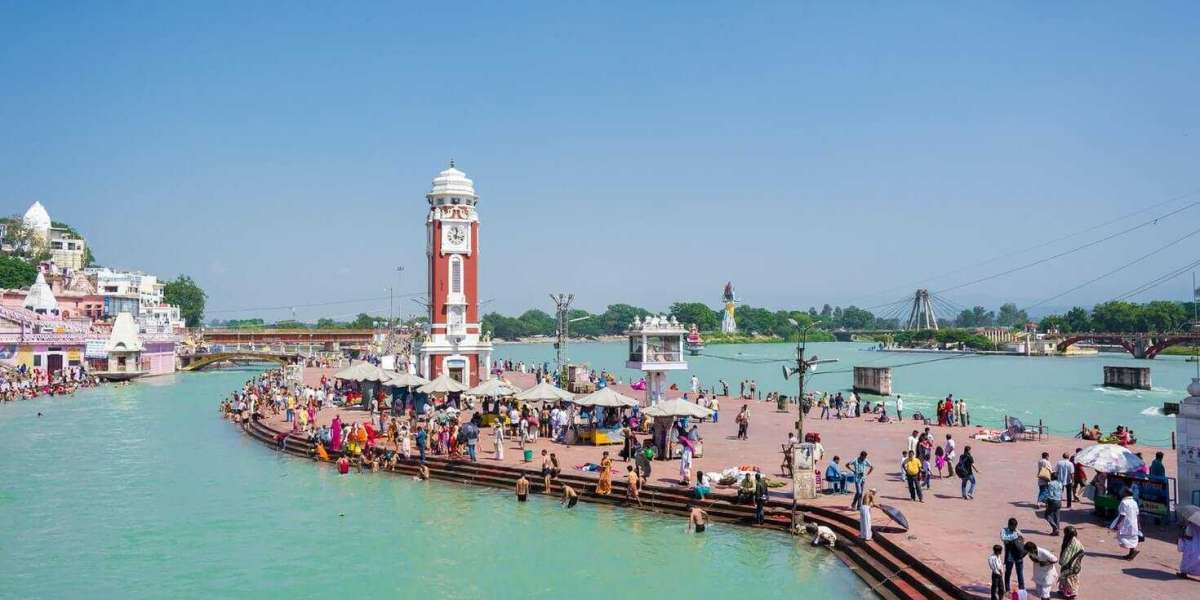Nestled along the banks of the sacred Ganges River, Haridwar stands as a beacon of spirituality, beckoning devotees and seekers from far and wide. This ancient city, steeped in mythology and tradition, is a tapestry woven with the threads of faith, devotion, and the profound reverence for the divine.
Whether you're a pilgrim seeking solace in the holy waters or a wanderer in search of enlightenment, Haridwar promises an experience that transcends the boundaries of the physical realm. However, to truly savor the essence of this spiritual haven, timing your visit is of utmost importance. From the auspicious festivals that paint the city in a kaleidoscope of colors to the climatic conditions that shape the ebb and flow of pilgrims, the best time to visit Haridwar is a delicate balance between cultural significance and practical considerations.
The Celestial Rhythms: Festivals that Ignite the Spirit
Haridwar's spiritual tapestry is woven with a myriad of festivals, each one a vibrant celebration of faith and devotion. These auspicious occasions not only offer a glimpse into the city's rich cultural heritage but also provide an unparalleled opportunity to witness the devotional fervor that envelops the sacred precincts.
Kumbh Mela: The Ultimate Spiritual Convergence
If you're seeking an immersive experience that epitomizes the essence of Haridwar, the Kumbh Mela should be at the top of your list. Held every twelve years, this grand festival is a cosmic convergence of devotees from all walks of life, who flock to the holy city to take the sacred dip in the Ganges.
During the Kumbh Mela, the air is thick with the chanting of mantras and the aroma of incense, as pilgrims from far and wide come together to celebrate the divine. The city transforms into a vibrant tapestry of colors, with devotees adorned in traditional attire, sadhus (holy men) sporting their distinctive garb, and a palpable energy that permeates every corner.
Ganga Dussehra: Honoring the Life-Giving Waters
Another captivating festival that graces Haridwar is Ganga Dussehra, a celebration that pays homage to the life-giving waters of the Ganges River. Held in the month of June, this festival is a vibrant display of gratitude and reverence for the sacred river that has nurtured the spiritual and cultural fabric of the region for centuries.
During Ganga Dussehra, the ghats (riverbanks) come alive with a symphony of rituals and ceremonies. Devotees throng the ghats to take the holy dip, seeking purification and spiritual renewal. The air resonates with the melodies of devotional songs and the fragrance of floral offerings, creating an atmosphere that is truly transcendent.
The Golden Mean: Striking the Climatic Balance
While the spiritual allure of Haridwar is undeniable, practical considerations such as weather and climate play a pivotal role in determining the best time to visit. The city's location in the northern plains of India exposes it to varying climatic conditions, each season offering its own unique charms and challenges.
The Temperate Embrace: October to March
If you're seeking a comfortable and pleasant experience, the period between October and March is arguably the best time to visit Haridwar. During these months, the city basks in a temperate climate, with temperatures ranging from a comfortable 15°C to a pleasant 25°C (59°F to 77°F). The dry and clear skies make for ideal sightseeing conditions, allowing you to explore the city's architectural marvels and sacred sites without the discomfort of excessive heat or humidity.
This time of year is particularly appealing for those seeking a serene and contemplative atmosphere. With fewer crowds and a more tranquil ambiance, you can truly immerse yourself in the spiritual essence of Haridwar, savoring the meditative silence that pervades the ghats and temple complexes.
The Summer Sojourn: April to June
For the intrepid traveler, the summer months of April to June offer a unique perspective on Haridwar. While the temperatures soar, reaching a sweltering 40°C (104°F) or higher, the city takes on a different character, one that resonates with the resilience of the human spirit.
If you're willing to brave the scorching heat, you'll be rewarded with a more intimate and uncrowded experience. The ghats, though less frequented, offer a respite from the relentless sun, inviting you to cool your senses and find solace in the gentle lapping of the Ganges' waters. This is also the perfect time to witness the vibrant celebration of Ganga Dussehra, as the city comes alive with devotional fervor.
Embracing the Spiritual Odyssey: Immersive Experiences
Haridwar is not just a destination; it's a gateway to a profound spiritual odyssey. From the sacred rituals that have been practiced for centuries to the awe-inspiring architecture that stands as a testament to the city's rich heritage, every experience in Haridwar is an invitation to embark on a journey of self-discovery and enlightenment.
- Sacred Dip: Take the purifying dip in the holy waters of the Ganges River, a ritual that has been observed by devotees for centuries, and experience the profound sense of renewal and inner peace that follows.
- Aarti Ceremony: Witness the mesmerizing Ganga Aarti, a devotional ritual performed every evening at the ghats, where the flickering flames of diyas (earthen lamps) and the chanting of mantras create a spellbinding atmosphere.
- Temple Trail: Embark on a pilgrimage through the numerous temples that dot the city, each one a architectural marvel and a testament to the enduring faith of the devotees.
- Spiritual Retreats: Immerse yourself in the teachings of renowned gurus and spiritual masters, attending discourses and workshops that offer a deeper understanding of the ancient wisdom and traditions.
Frequently Asked Questions
Q: What is the best time to visit Haridwar for the Kumbh Mela?
A: The Kumbh Mela is held once every twelve years, and the dates vary according to the astrological calculations. However, the most auspicious time to attend this grand festival is during the main bathing days, which are determined by the alignment of celestial bodies.
Q: Can I visit Haridwar during the monsoon season?
A: While the monsoon season from July to September can be unpredictable, it can also offer a unique experience of witnessing the Ganges River in full flow. However, it's essential to be prepared for occasional downpours and potential disruptions to travel plans.
Q: Is winter a good time to visit Haridwar?
A: Absolutely! The winter months from October to March offer a pleasant and comfortable climate, making it an ideal time to explore the city's sacred sites and participate in various rituals and ceremonies.
Q: How can I reach Haridwar?
A: Haridwar is well-connected by road, rail, and air. The nearest major airport is located in Dehradun, approximately 35 kilometers away. Alternatively, you can take a train to Haridwar's railway station or opt for a comfortable bus ride from neighboring cities.
Conclusion
Haridwar, the holy city where the Ganges flows, is a tapestry woven with the threads of spirituality, tradition, and unwavering devotion. From the auspicious festivals that ignite the spirit to the sacred rituals that offer profound renewal, this destination promises an experience that will leave an indelible mark on your soul.


